

|
|
|
|
|
|
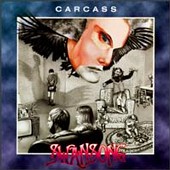
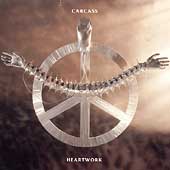
While it may sound remarkably like a term for a cheerleader bedecked in corpse paint and a short skirt, whooping and hollering for the Black Plague, it is nothing more than a description for a collective I came across while watching what I could muster of the second installment of the Traces of Death series. The narrator, in his best death metal impersonation, informed me that this video was the first to display scenes entirely made up of actual, honest-to-god death. “This is,” and these are his exact words as I remember them, “for the true death enthusiast.”
While many of the self-righteous types may find the notion of a relatively small cadre of people who get a hard-on and can munch on a bowl of popcorn while watching a messy dismemberment or a stomach-churning evisceration appalling, you can more than likely count on the fact that if you were fortunate enough to see Carcass before they disbanded, there were a fair share of “true death enthusiasts” scattered throughout the audience. And I can imagine their horror when picking up a copy of Heartwork for the first time to see – gasp! – a stupid looking sculpture by H.R. Giger. An artsier-fartsier Carcass.
And things certainly went downhill from there for these traditionalists. It must have stung like formaldehyde on an open wound to discover that even the lyrical themes that made Carcass so endearing to these horny-for-death types were altered as well. Ditties of medical anomalies and autopsies were suddenly pronounced D.O.A. Resuscitated in their place were lyrical themes reflecting upon the insanity of war, the absence of individuality in an age of industrialization, and the purity of art, among other less than repulsive topics.
If any single factor can be attributed for placing the toe tag on the festering corpse of the true death contingency, however, it is more than likely a noticeable and significant shift in musical direction. Long gone is the once excessive usage of blastbeat-driven grindcore, even evolving a few steps beyond the riff-heavy complexity of Necroticism into one of the freshest and most melodically brutal influences in all of extreme metal. The guitar interchanges between axe gods Mike Amott and Bill Steer can go from a chugging run to a fluid and even graceful solo, only to be chased by a speed-induced death metal shred without becoming annoyingly excessive or pretentiously showy. In other words, the band has forged an album with enough divergent riffs to keep things from growing musty. Perhaps much of this can be attributed to the expert production of Colin Richardson, who is one of the few who could possibly harness and accentuate the difficult stylistics of Carcass and do it justice.
Carcass’ Heartwork
is one of those modern classics that great bands dedicate whole careers
striving to create but consistently fall short. In a nutshell, it is the
band’s – and one of extreme metal’s – crowning achievements. May Carcass
rest in peace. As well as the “true death enthusiasts” jerking off to the
new Exhumed album.
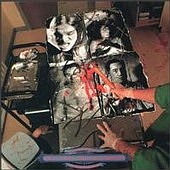
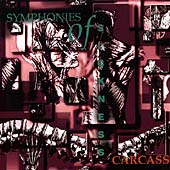
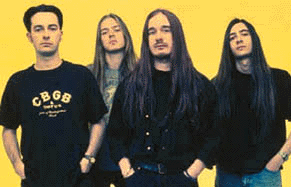 .
.